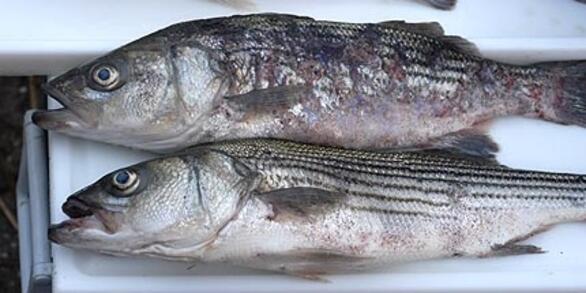Fish and Aquatic Species Conservation
Fish and Aquatic Species Conservation
At the Eastern Ecological Science Center (EESC), we strive to provide world-class science to inform natural resource decisions that preserve and enhance our quality of life.
Filter Total Items: 89
Assessing Faunal Recovery in a Headwater Stream
A catastrophic fish-kill in a small tributary stream of the Etowah River system (Dawson County, Georgia) has created the opportunity to assess faunal recovery, including recolonization by a federally-listed fish species (the Cherokee darter Etheostoma scotti). Fishes are expected to recolonize Flat Creek by moving upstream from downstream sources. In particular, Flat Creek flows into a larger...
Passage Technologies for American Eels
The American eel ( Anguilla rostrata) migrates into freshwater in the juvenile (glass eel and elver) stage, feeds and grows in freshwater habitats, and migrates downstream to the ocean to spawn as an adult. Migrating eels frequently encounter barriers in river environments, primarily in the form of dams, that limit access of juveniles to upstream growth habitat, and can injure or kill adult...
Restoring a native fish to Catoctin Mountain Park
Native species conservation is a fundamental purpose of National Parks. Catoctin Mountain Park (CATO) in Maryland supports a prized trout fishery and a healthy community of native fishes, with one exception: native Blue Ridge Sculpin ( Cottus caeruleomentum) appear to have been extirpated from Big Hunting Creek above Cunningham Falls. Infection by a fungal-like protist Dermocystidium is...
Assessing stream health and fish habitat in streams of the Chesapeake Bay Watershed
Streams and rivers provide habitat for a diverse array of aquatic and semi-aquatic species. However, human alteration to landscapes and riverscapes has affected this habitat resulting in its degradation and thus loss of habitat and associated sensitive aquatic species. While this relationship has been known for many years, only recently has the availability of data and analytical capabilities...
Exploring the potential effects of shale oil and gas development on freshwaters
Widespread shale oil and gas (unconventional oil and gas, UOG) has only recently begun and many gaps in our knowledge of its potential effects to freshwaters exist.
A hydrological framework to improve precision of Vital Signs metrics in the Appalachian highlands
Stream flow is a fundamental driver of ecological structure and function, but its influence on bioassessment measures is poorly understood. Although extreme flow conditions (e.g., floods and droughts) have long been known to play a central role in structuring stream communities, a mechanistic understanding of the linkages between flow variables, landscape and local physical characteristics, and...
Fish locomotion and biomechanics as limiting and optimizing factors in fish passage
Swimming ability determines how well fish are able to access habitat, and is a fundamental design consideration for passing fish at dams, road crossings, etc.
Effects of temperature and energy use on fish passage and spawning success of American shad
American Shad are the most numerous and economically important anadromous species on the east coast of the United States. Yet in many river systems their populations have experienced declines, primarily due to the impacts of dams and habitat loss.
Genetic connectivity among regional populations of red tree corals (Primnoa pacifica) in the North Pacific Ocean
Knowledge of the degree to which populations are connected through larval dispersal is imperative to effective management, yet little is known about larval dispersal capability or population connectivity in Primnoa pacifica, an important habitat forming octocoral on the outer continental shelf and upper slope in the Gulf of Alaska.
Genetic characterization of the clubshell species complex (Pleurobema clava and P. oviforme) for enhanced conservation
The diversity of freshwater mussels (family Unionidae) in the United States is unmatched in the rest of the world, yet this biodiversity is highly vulnerable, with more than 70% of recognized species considered to be either endangered, threatened, or of special concern. Most species inhabit limited ranges and have small (and/or often unknown) dispersal abilities due to reliance on specific host...
Deepwater Atlantic Habitats II: Continued Atlantic Research and Exploration in Deepwater Ecosystems with Focus on Coral, Canyon, and Seep Communities. Part II: Genetic Connectivity and Oceanomic Studies
This study utilizes genetics and genomics techniques to characterize biodiversity and genetic connectivity among deep-sea coral habitats and cold seeps in and near submarine canyons and will use environmental DNA techniques to characterize plankton diversity and to identify key contributors to carbon export from surface waters that sustain sensitive benthic communities. The proposed genetics and...
Novel approach using flocculation to concentrate edna to search for early invasions of specific aquatic invasive species
Early detection systems for aquatic nuisance species have been improved by the advancement of polymerase chain reactions that amplify DNA sequences for decoding.















